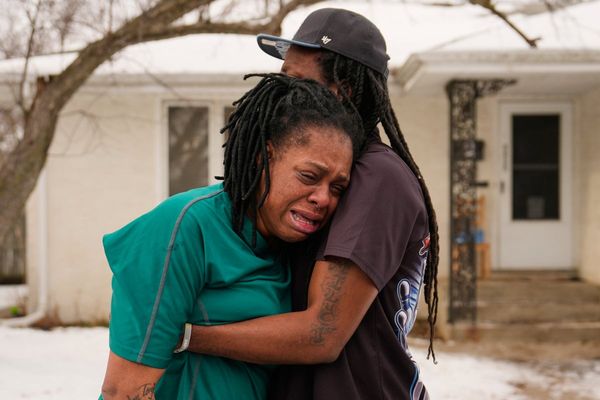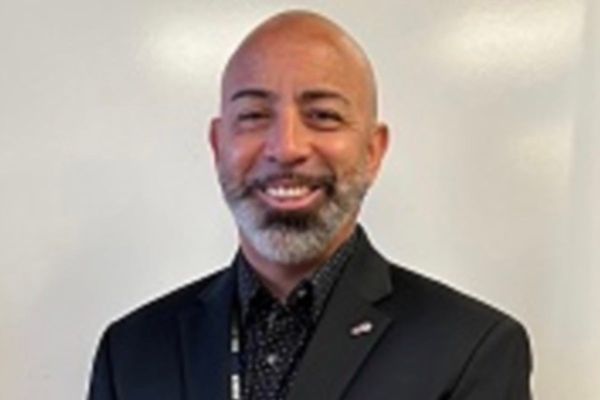
What health condition affects some 200 million people around the world, yet remains woefully misunderstood, underfunded, and barely addressed in medical-school curricula?
The answer to that riddle is no less of a riddle: endometriosis is a disease that the World Health Organization estimates affects one in 10 women and girls globally. And yet the National Institute of Health allocates a whopping .038% of its research resources to the disorder.
Endometriosis, which involves tissue similar to uterine tissue growing elsewhere in the body, has myriad symptoms, including GI distress, migraines, discomfort during sex and abdominal pain that can range from debilitating to excruciating. Countless women miss days of school and work, lose their jobs, and suffer depression as a result of the illness. Experts say endometriosis could be the underlying cause of 50% of infertility cases. Lena Dunham has shared her endo story, as has Amy Schumer, who called it “a lonely disease”. The two elected to undergo hysterectomies to alleviate their pain. Despite efforts to raise awareness, it persists as an underground topic, and many doctors are ill equipped to help those afflicted or don’t even believe their patients.
“It’s a perfect storm of undervaluing women and women’s health, inequities in health care, menstrual taboo, gender bias, racial bias, and financial barriers to healthcare,” said Shannon Cohn, the director of Below the Belt: The Last Health Taboo, a searing one-hour documentary set to premiere on PBS. Part of the problem is the inaccessibility of diagnoses. Women might suspect they are affected without ever knowing for sure. “If you regularly miss days of school or work that’s a key hallmark,” said Cohn. “Right now the only way to get a definitive diagnosis is to have surgery.”
A lawyer who spent her early 20s working on the Enron investigation, Cohn, 47, enrolled in film school in her late twenties and now belongs in the tiny crescent of the Venn diagram where “film-maker” and “change-maker” meet. Ten years in the making, her film is a heavy-hitting tool for her advocacy work. “I’m a lawyer but I would say [I’m a] community organizer,” she said. “Or really a social impact producer.”
An endometriosis sufferer herself, Cohn was speaking from the Amanda Gorman and Malala Library at Vital Voices, the Washington DC women’s leadership non-profit founded by Hillary Clinton, who is an executive producer on the film. Other producers are the actors Rosario Dawson, Corinne Foxx and Mae Whitman, all of whom suffer from endometriosis. (Clinton has not publicly stated that she belongs to this group.) Cohn originally met Clinton through Senator Orrin Hatch, the late Republican senator whose granddaughter appears in the film as a high school student, and who worked across the aisle with Elizabeth Warren to raise endometriosis awareness in Washington.
Cohn had attended a screening with bipartisan members of Congress and media the night before her interview with the Guardian, and was gearing up for a lunch with members at the NIH and congressional staffers. “I’m here to move this disease forward in a meaningful way,” she said. As things stand, the average diagnosis doesn’t come until a woman has spent ten years searching for an answer and seen eight doctors. As one of the women afflicted with the disease says in the film: “It’s surreal. You get better information from Facebook groups than doctors.”
Cohn’s first symptoms presented at age 16, but it wasn’t another 13 years until she heard the word “endometriosis” from a healthcare professional. She transitioned from law to film-making by creating a TV series called Sea Nation about selling her possessions and hitchhiking on sail boats across the world. She was inspired to make her latest work when she read an article in the Wall Street Journal about the increased genetic risk of endometriosis. “It’s a very personal issue to me.”
It’s not just her daughters, ages 12 and 15, she’s worried about. “Everybody is affected by endometriosis,” she said. “Even if you don’t have it, then you know and love someone who does.” Worse, doctors are more likely than not to overlook the diagnosis. “Half of general practitioners can’t [name] the three main symptoms of the disease,” said Cohn. “Medical students get about an hour of instruction on endometriosis, and it’s usually in a bullet point list of like gynecologic conditions, which is insane, since it affects 200 million people on the planet.”
Her film, an intimate and straight-shooting work, follows a quartet of women dealing with the disease. It also includes their caretakers – parents and significant others who chaperone appointments and sit in waiting rooms while their loved ones undergo surgery. One of the most heart-wrenching portraits in Below the Belt is of the father who learns that his daughter’s operation was successful in some respects – but she will no longer be able to have a child as a result.

Another one of the film’s subjects, Kyung Jeon-Miranda, is a Brooklyn artist who spent much of her life enduring her condition in relative secrecy. Her art has always spoken volumes, though. Her pieces, many about mothers and children, brim with loneliness and pain. Filled with ghoulish children and slack-shouldered women, the images appear throughout the documentary and lend a chord of Henry Darger-ish melancholy to the work.
The artist was 23 when a doctor confirmed that the debilitating abdomen pain that flared up around her periods was the result of endometriosis. She had no health insurance at the time, but finally decided to invest in a consultation with a specialist. “Each appointment was $800 which to me felt like $5,000,” she said. All told, she estimates she has poured $25,000 to $30,000 into her exploration and treatment of the disease. The film portrays a particularly tumultuous period in her life. After years of trying to become pregnant, she learns that she is pregnant – but due to complications, the pregnancy does not take. At the film’s climax, we see other subjects undergo extensive excision surgeries, which are, at best, expensive and exhausting.
Jeon-Miranda has been working alongside Cohn to challenge the agenda. The advocacy helps her find her own sense of relief. She recalled attending a screening earlier this spring. “I sat next to a [Republican] congressperson [Ben Cline] and I actually heard him, like, crying,” she said.
The day that Cohn met with the Guardian, she was preparing to propose to the attendees at her lunch that Congress earmark $50m of funding to go to endometriosis research. In addition to helping redirect monetary resources, Cohn hopes to change the conversation. Her 15-year-old daughter, who exhibits none of the embarrassment around female health that Cohn recalls dealing with when she was growing up, in Mississippi, gives her a modicum of hope. “She talks about her period the same way she talks about what she’s going to have for lunch.”
Below the Belt: The Last Health Taboo premieres on PBS on 21 June with a UK date to be announced







